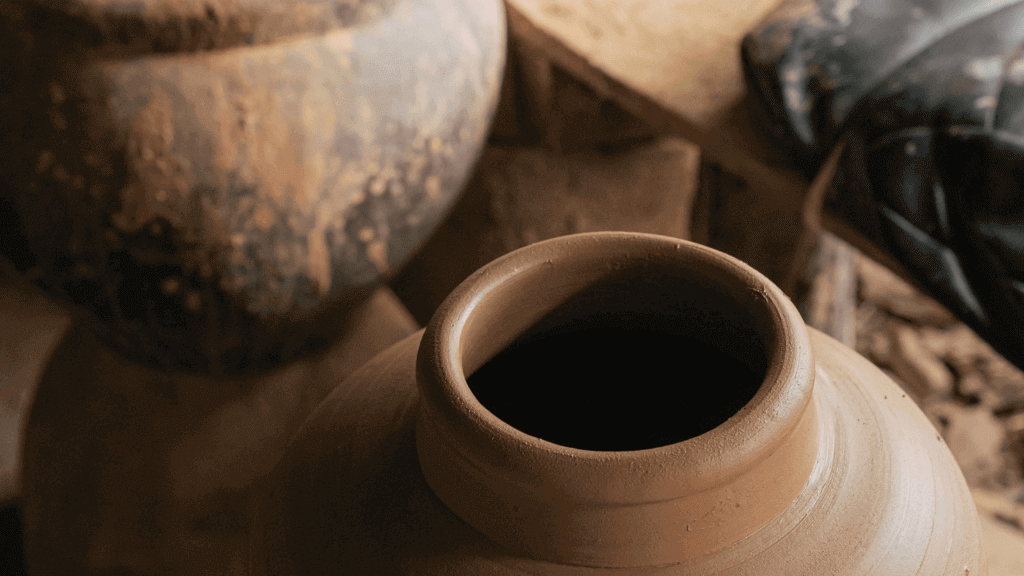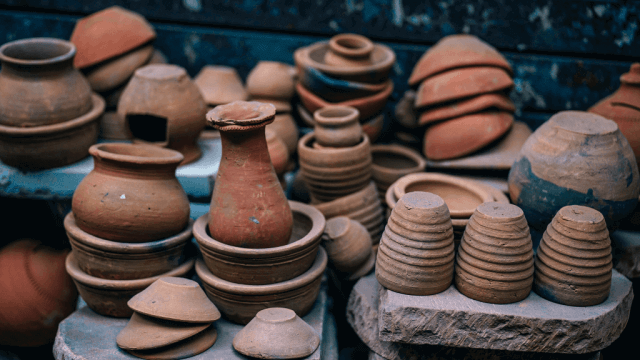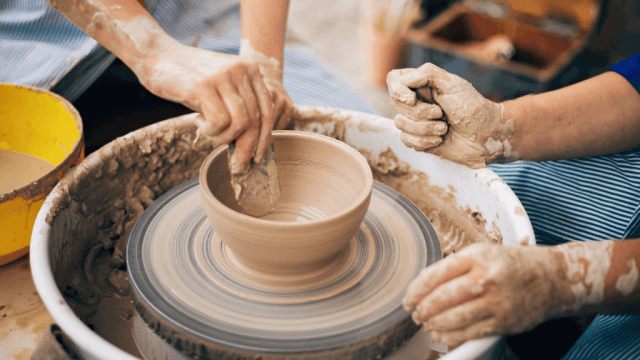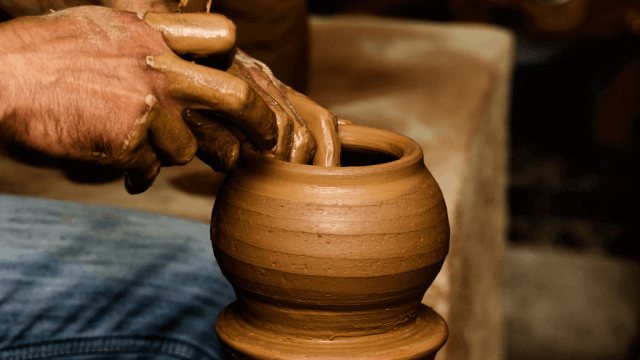Unglazed pottery pieces may be safely used for drinking out of or serving food if they are fired at a high enough temperature to become vitrified and waterproof 1 2. This is true for midrange (stoneware) and high-fire clays 3, but not for low-fire clay, which is not waterproof and can become fragile when exposed to liquids 4.
Can You Drink Out Of Unglazed Pottery?
No, unglazed pottery is not food safe. Low-fire clay pieces must be glazed in order to be considered food safe, while mid and high-fire clays can be used for dinnerware without glaze.
Can You Eat From Unglazed Pottery?
Unglazed pottery made from low-fire clay is not considered food safe. However, mid and high-fire clays can be used for dinnerware without glaze and are considered food safe. Washing with hot water and soap and rinsing and drying thoroughly is recommended for unglazed pottery to ensure it is safe to eat.
Understanding The Role of Glaze in Pottery
Despite the outlined exceptions, glaze typically plays an important role in making pottery food safe. Glaze, a coating of glass-like substances, acts as a waterproof sealant that prevents porous pottery from absorbing liquid. This is especially critical with low-fire clays, as noted above, which do not become vitrified even after firing.
In addition to providing a waterproof barrier, glazes also often contribute to the visual appeal of the pottery, adding color, texture, and sometimes even a certain depth to the piece. In other words, aside from its functional purpose, glazing can also be seen as an art form in itself.
Unglazed Pottery and Lead Risk
An important aspect to consider when determining if unglazed pottery is food safe is the risk of lead exposure. Historically, certain pottery glazes contained lead, which can pose serious health risks if ingested. However, contemporary pottery manufacturers generally avoid using lead-based glazes due to these health concerns.
While this risk is typically associated with glazed pottery, unglazed pottery can also present a risk if the clay used to create the pottery contains lead. This is not common, but it’s worth noting, particularly if the pottery is vintage, imported, or created using clay from unknown sources.
Factors Influencing the Safety of Unglazed Pottery
The safety of unglazed pottery isn’t solely reliant on the firing temperature and the type of clay used. Other factors that can influence the safety of unglazed pottery for food and drink include:
- Pottery’s Age – Older pottery may be more likely to contain lead or other harmful materials. Even if the pottery is unglazed, if the clay itself contains lead, using it for food or drink can pose a risk.
- Use of Pottery – Even if an unglazed pottery piece is safe for occasional use, it may not be suitable for daily use. Due to the absence of a protective glaze, unglazed pottery can become stained or worn over time.
- Cleaning Methods – Unglazed pottery can be harder to clean than its glazed counterparts, primarily because its porous surface can absorb food particles, potentially leading to bacterial growth. Therefore, regular, thorough cleaning is essential.
Conclusion
In conclusion, whether unglazed pottery is food safe largely depends on the type of clay used, the firing temperature, and how it is used and maintained. While some unglazed pottery can be used safely for food and drinks, it’s always important to verify this information with the potter or manufacturer. If you’re in doubt about the safety of your unglazed pottery, it might be best to use it for decorative purposes instead.











